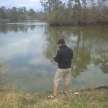My Top 7 Books About Writing
A Simple Guide to an Enormous Topic

I grew up learning how to write in grade school and high school. But the way they taught us to write, didn’t make any sense to me. We were taught to write relying on The Gospel According to the MLA Handbook. This was the way to write research papers and the way our college professors would want us to write papers. It wasn’t until I got to college until I learned just how wrong those words were.
As a writer, it’s important to be continuously improving and learning the craft. This comes from a variety of places. Workshops. Classes. Just simply writing. And also from books. I have quite a few books draw from for writing guidance, some of which are actually written on the topic of writing. I have selected 7 of these books to shared
Jab, Jab, Jab, Right Hook — by Gary Vaynerchuk — First, you have to understand that what you write has to make sense. The words have to flow and the concept has to be approachable. Once you have the writing part figured out, it’s time to look at formatting. While this book is about writing native posts for social media platforms, you need to understand how your writing will appear on the page, the mobile device, and the computer screen. An added bonus is that you will be better able to cross post you content across multiple platforms.
The Best American Short Stories 2008 — edited by Steven King — I was introduced to this book in the last creative writing course I took at Texas Tech University. It was one of 3 books chosen as text books for the class. The point of this book for the class was one, to introduce us to a variety of writing styles, and authors, and two, to give us discussion points as a class. Since then, I have collected many of the books in the Best American Series. My favorite is The Best American Travel Writing 2008, edited by Anthony Bourdain. These books helped me develop two of my writing rules, read a lot and talk about writing.
Draft No 4: On the Writing Process — by John McPhee — Sometimes, I need it broken down for me. Not in a way that is oversimplified, but in a way that is focused. That is what John McPhee does in Draft No 4. In a series of essays, that originally appeared in The New Yorker, he dives in to the process. Titles like Structure, From of Reference, and Omission, tell you all you need to know about what you are about to get yourself into. As a teacher at Princeton University, it should come as no surprise that John McPhee has no end of practical advice to give to not only the budding novice writing looking to jumpstart a career, but also to the seasoned profession looking to reinvigorate a storied history as a writer.
The Truth of the Matter: Art and Craft in Creative Non-Fiction — by Dinty W. Moore — This book was instrumental in writing one of my favorite pieces called Farewell, Dorothy, about the loss of my grandmother, in a creative non-fiction class in college. Each chapter or section consists of either an essay or an excerpt from an essay that nails each chapter’s focus. The most important take away from this book is that a writer can have fun writing non-fiction and know it doesn’t have to sound like it came from a scientific journal. It’s easy to forget that a memoir or biography is non-fiction. This book serves for me as a means of encouragement to write and explore the mon-fiction genre.
Making Shapely Fiction — by Jerome Stern — This is another text book from my college writing classes, another great selection by a college teacher. Jerome Stern explores beginnings, endings, action, dialogue, and writing what you know. Flipping through these pages again, I noticed that one of the chapters in the book is named “Accuracy to ZiggZag,” which to me just magnifies what you are going to encounter while exploring this book. The way Stern put it is, “Tension is the mother of fiction. When tension and immediacy combine, the story beings.”
The Elements of Style — edited Richard De A’Morelli — Full disclosure, I haven’t actually read this book yet, but it is already one of my favorites. I have had so many people recommend it that when I got it, I felt like I already knew it, like it’s an old friend that I can’t wait to reconnect with. Flipping through the pages, this book covers elements that we as writers often overlook as basic, but forget that they are in fact elemental. Grammar, spelling, and composition are all more than just basics, but the foundations of our craft. Without those, a good idea is just that. For those reasons, I am going to be reading this soon to serve as a reminder for myself.
Grammar Girl’s Quick and Dirty Tips for Better Writing — by Mignon Fogarty — Maybe 10 years ago, I was visiting a friend in DC for her birthday. Over the course of the weekend, we took in sites, museums, monuments. We ate. We drank. We talked about books. She insisted that I check this one out. I thought it was interesting, because I never knew her to be a grammar geek like me. She was an architecture student after all. I think I finished it before my plane touched down in Houston. This is a really good and informative grammar primer for the beginner and fantastic refresher for the professional. The way it is written makes it terrifically approachable and simple to understand.






Comments
There are no comments for this story
Be the first to respond and start the conversation.